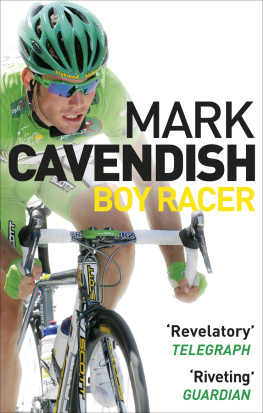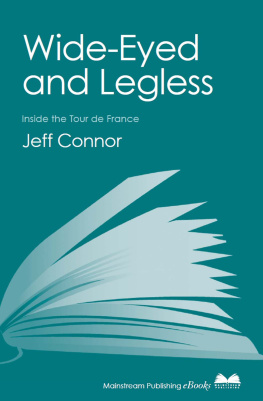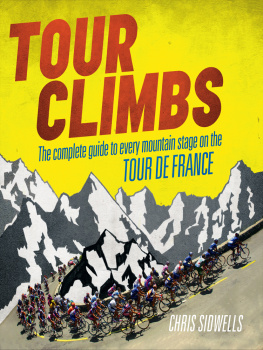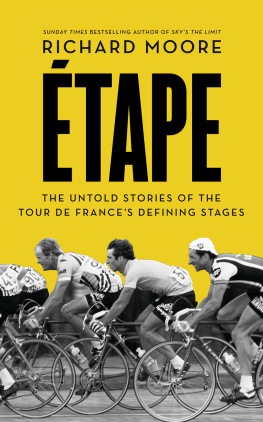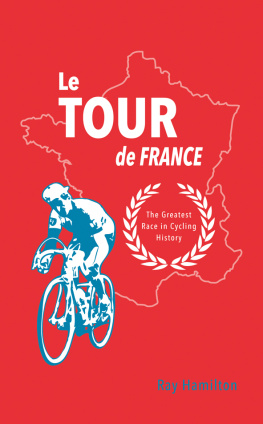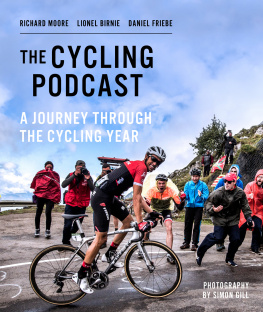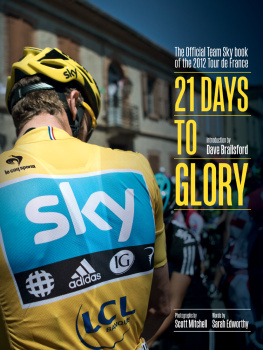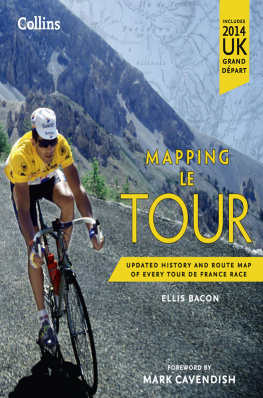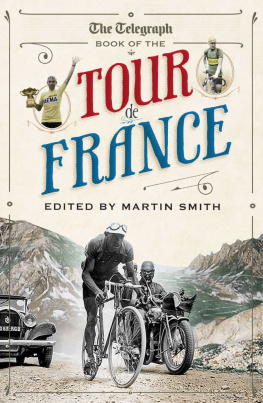CONTENTS
About the Book
Step behind the scenes and experience the pure heart-pumping adrenaline of the Tour de France with the man LEquipe call the Mozart of the 12-wheel cog...
Fully updated to include Marks record-breaking 2009 Tour
ACKNOWLEDGEMENTS
The opportunity to write this book arose mainly thanks to my four stage wins in the 2008 Tour de France. That opportunity therefore owes as much to the countless individuals who have supported my career as did those four, life-altering achievements.
Mum, Dad, brother Andy, uncles, aunts, cousins, grandparents, Melissa and her family; all have witnessed, encouraged and celebrated my transformation from cheeky, chubby teenager to Tour de France stage winner. All deserve my heartfelt appreciation. The same applies to my many mates on the Isle of Man and elsewhere, inside and outside of cycling too numerous to list here, but who know who they are, and who will always be my anchor in reality, whatever riches, success, disappointment and failure I go on to enjoy or endure.
In different periods, British Cycling and my current team, HTC-Columbia, have been my two families in cycling. Rod Ellingworth has been the bridge between those phases in my life a coach and a constant source of advice, sympathy, friendship and necessary bollockings. At Columbia, Bob Stapleton, Brian Holm, Rolf Aldag and Allan Peiper, in particular, all showed faith in me when there were other, more obvious candidates for their confidence. The extraordinary, selfless performances of my teammates, some mentioned here, some not, have been a mere continuation of that trust. Lads, I love every second we spend racing together.
I thank my manager Fran Millar, my literary agent David Luxton and everyone at Ebury Press for their help in taking this book off the drawing board and into publication. I would also like to show my gratitude to Daniel Friebe for the same reason, and for his commitment at every stage of the project.
STAGE
Saturday, 5 July 2008
BRESTPLUMELEC, 197.5 KM
I HAVE A mate, Dools, my best friend from the Isle of Man, who often asks me what its like to ride a stage of the Tour de France. Dools, like most amateur cyclists, is curious to know how long hed last in one of the Tours first half-dozen, routinely quite flat stages as the race makes its way towards the mountains. He wants to find out whether hed be able to last the pace for ten, fifty or maybe even a hundred kilometres.
Dools, I tell him, you wouldnt even make it through the neutralised zone. I can only think of about three people on the Isle of Man who would.
The Tour de France starts in the neutralised zone on the first stage, but I swear that for most even competent amateurs thats also where it would end. The neutralised zone is the stretch between one and ten kilometres used by the race organisers to take the peloton safely and slowly out of the high street or town square where the stages inevitably begin, and at the same time give the public at the side of the road a decent view of the race. In theory, its the Tours no-fly zone, neutralised in so much as all racing and attacks are off until its end-point or kilometre zero of the race proper. In practice its like sharing a tightrope with a herd of buffalos.
Danger is a topic youre often asked about as a sprinter. The common perception is that the final 200 metres of a Tour stage are the most dangerous and the most frightening. That might be half right because while it may hold true that the final few seconds of a bike-race are fastest and apparently chaotic, at 70 kilometres per hour and 200 heartbeats per minute, theres simply no time for anxiety. Adrenalin, yes. Instinct, sure. But fear, no. The day I begin to be afraid of taking risks, afraid of crashing, afraid of my own fearlessness, will be the day that I also start worrying about my future as a top sprinter.
We were scoobying along at no more than 30kph, yet I meant what I told Dools he wouldnt even have made it to the start line, not because he wasnt fast or fit enough but because of the feats of bike-handling required just to stay upright. At any one time, you could have laid a hand on about six different riders, so closely were the bikes and bodies huddled together. I was climbing up kerbs and bunny-hopping over grass verges. It was chaos, absolute, utter chaos the kind that leaves you mentally drained after five minutes... and we still had 197.5 kilometres to ride just to earn the right to do it all again the next day.
We passed the kilometre zero mark. The Tour director Christian Prudhommes flag came down to indicate the start of the race, and it was as though someone standing at the side of the road had turned on a giant hairdryer. On a bridge immediately after the start line, wind whipped in from the estuary and slanted across the road at 90 degrees, almost taking the entire peloton with it. Everyone sitting uncomfortably? it seemed to say. Okay, then bienvenu au Tour...
Not many people knew it, but I wasnt even supposed to be here. Selected the previous year at Gerald Cioleks expense, the plan at the beginning of the 2008 season had been that Id skip the Tour to concentrate on preparing for my shot at gold in the Madison at the Olympics. In my absence, Gerald would be the teams sprinter at the Tour. But then came the Giro dItalia or Tour of Italy in May, when my two stage wins forced a rapid reassessment of how Gerald and I would now be spending the month of July. Gerald and his sprinting would have been the fulcrum of almost any other team and their objectives for the Tour; now he accepted the role of my understudy with a grace and professionalism that both humbled and amazed me.
On todays stage, at least, Gerald would have his chance. The finish line was at the top of a nasty one-kilometre climb, the Cte de Cadoual, that would scatter the pure sprinters like me or Robbie McEwen, but might suit a rider like Gerald, whose finishing kick relied more on power than leg-speed. Most mornings, in our pre-stage briefing, Brian Holms instructions could be condensed into some variation on Have fun! and today he didnt need to tell us that a break would go early in the stage. A break always went early in the stage. Thered be attacks, counter-attacks, full-blooded accelerations, half-hearted ones, then, five or six riders would open up a gap of 100 metres, 200, 300, before, finally, the main peloton would hand them the rope with which to hang themselves, before scooping up the suicide victims somewhere in the final ten kilometres. It was one of those accepted clichs of cycle racing and especially stages in the first week of the race.
Even by Tour standards, this was a tense, fast, nervous opening stage. Sure enough, the break was reeled in before the final climb up the Cte de Cadoual, but the pace proved too hot and the slope too steep for me and for Gerald, who was spat out three-quarters of the way up the hill. At around the same time, at the front of the bunch and the race, Little Kim kicked hard around the penultimate bend, leaving a chasm behind him. Unfortunately, the Spaniard, Valverde, had timed his move perfectly, and swept past Kim in the final few hundred metres. Kim lived up to his other nickname by hanging on grimly for fourth.
The landscapes in Brittany had reminded me of the Isle of Man. The roads, too, were similar to those on which Id grown up narrow, gnarly and constantly undulating, with coarse, grey tarmac that gripped your tyres like a fifth brake-pad, and wind that seemed to gust in every direction except at your back.
If the Tour really was to be the journey of a lifetime, my lifetime, then this certainly seemed like a fitting place to start.
The home of Manx cats, the Bee Gees, the TT motorbike race and Mark Cavendish is a green, windy island in the middle of the Irish Sea, two and three-quarter hours ferry-ride from Belfast to the west, a bit less from Liverpool to the south-east, about 32 miles long and 15 miles across at its widest point.
Next page
